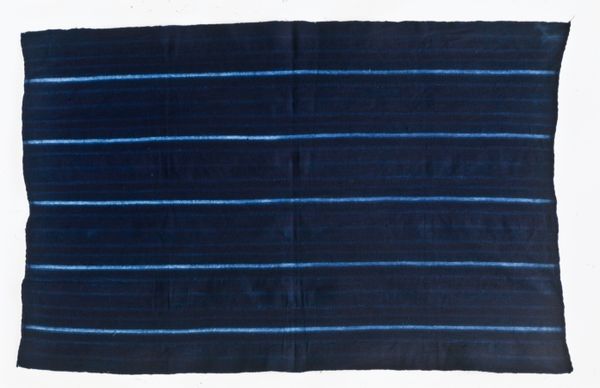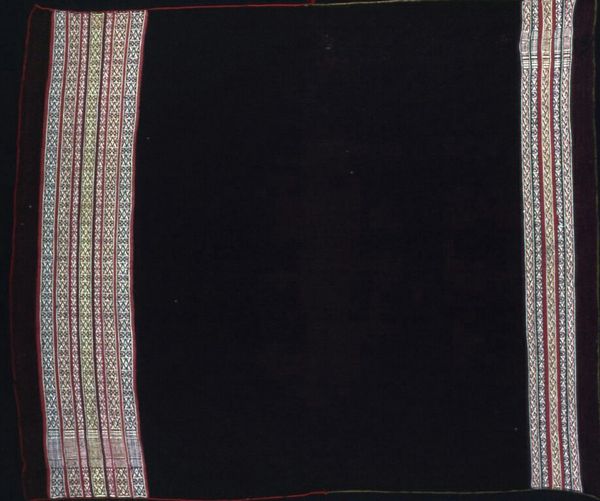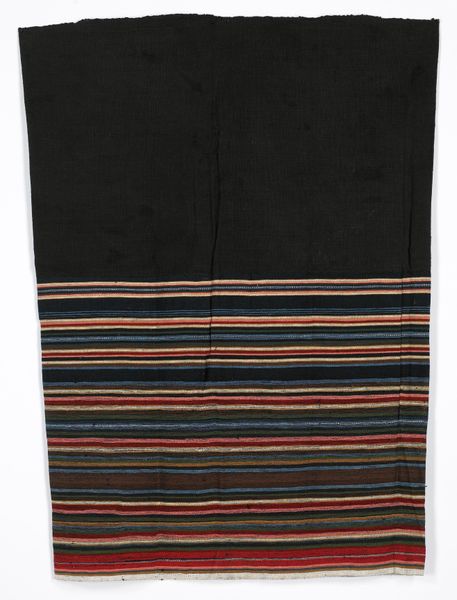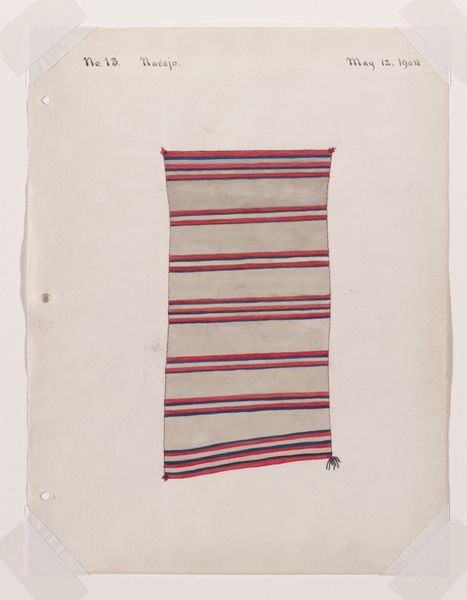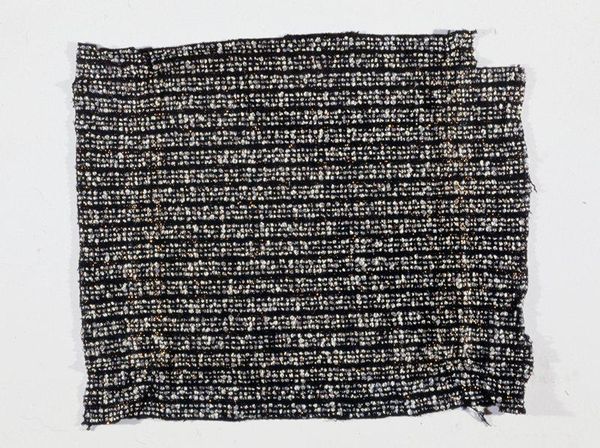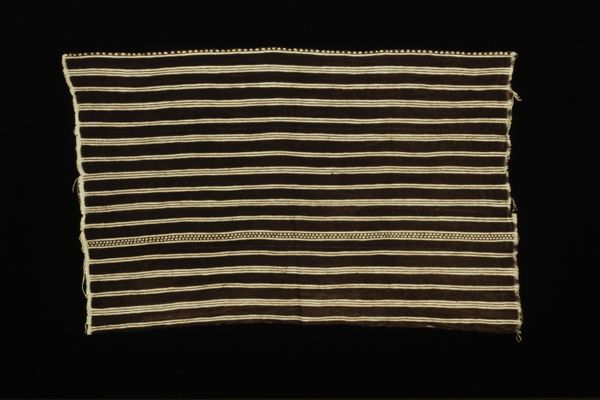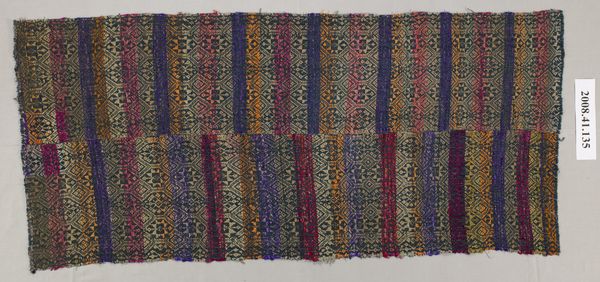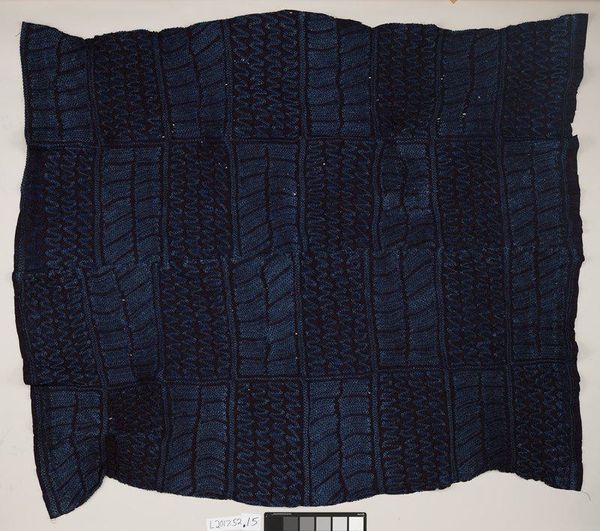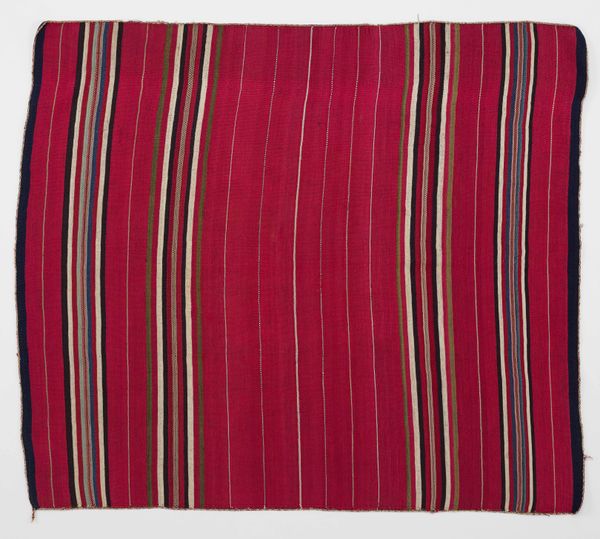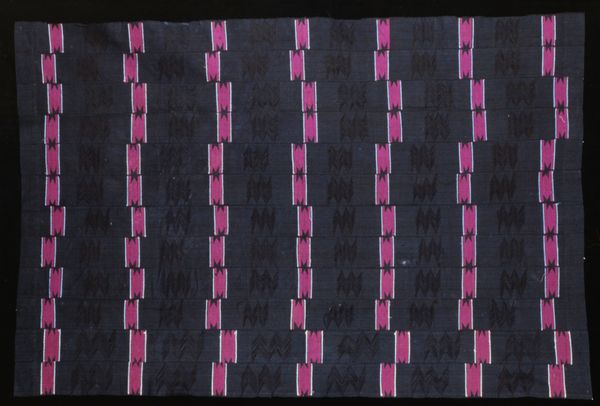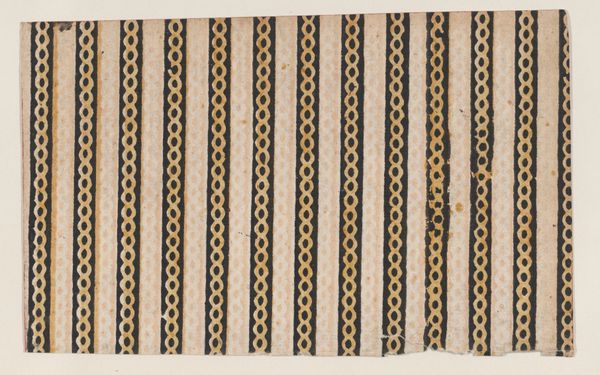
weaving, textile, cotton
african-art
weaving
textile
geometric
line
cotton
yoruba-art
Dimensions: 76 1/4 × 54 1/2 in. (193.68 × 138.43 cm)
Copyright: No Known Copyright
Curator: Before us is an exquisite example of Yoruba weaving from around the 20th century, simply titled "Wrapper," and crafted from cotton. It resides here at the Minneapolis Institute of Art. What strikes you about it initially? Editor: Its visual organization is what jumps out at me first. The geometry seems almost assertive. It’s a dark fabric, with horizontal lines—the strong blocks of dark red standing out. It’s almost austere in its simplicity. Curator: Indeed, Yoruba textiles are rich in symbolic meaning and social significance. These wrappers, woven predominantly by men, are used as garments, as emblems of status, and within ceremonial contexts. The arrangement of these horizontal bands is not simply decorative. Editor: So it's more than just eye-catching; it communicates a story or social position. How does the starkness you pointed out factor into this tradition? Were brighter colors commonly used in contrast to this, perhaps signaling a specific rank? Curator: It's interesting you note the "starkness." Dark hues, while not always present, weren’t necessarily reserved. The motifs, combined with the quality of the weave and materials, spoke to wealth and prestige. Also the repeated patterns. Editor: Repeated patterns functioning as a signifier of some kind? The motif reminds me of architectural facades for some reason, but scaled down, and obviously flattened out. Can we unpack this aspect? Curator: The repetition is definitely intentional. You can see similar linear patterns mirrored in other Yoruba art forms: beadwork, carving, and calabash decoration. It demonstrates an enduring visual language throughout Yoruba culture, weaving cultural memory into cloth. Editor: It feels like something that offers a real counterpoint to notions about African art in general – I'm realizing its incredible refinement in textile traditions and design principles. Curator: Precisely! Works such as “Wrapper” challenge perceptions. It encourages a reevaluation of what we consider traditionally "African" art by underscoring cultural complexity in West Africa. What started as “austere” is clearly carefully woven. Editor: Exactly! This has opened up a broader understanding of how to view objects from different vantage points. It's more about challenging a view, than finding just what seems superficially simple. Curator: Ultimately it reveals its inherent cultural power and the politics woven within its lines.
Comments
No comments
Be the first to comment and join the conversation on the ultimate creative platform.

